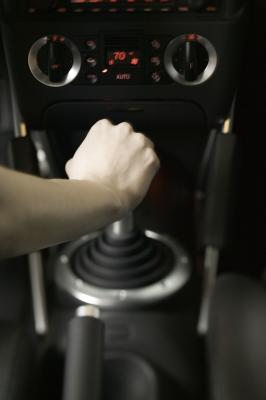
Transmission hesitation isn't uncommon, particularly with older units that may have seen a bit of wear and tear. In most cases, the failure comes down to some sort of fluctuation or drop in fluid pressure; in others, it may just be the price you pay for instant throttle response and quick gear changes.
A modern automatic transmission is made up of three basic interdependent systems: a mechanical system controlled by a hydraulic system and a hydraulic system controlled by an electrical system. These systems work together for the sole purpose of taking power from the engine and sending it through a set of gears and clutches. A clutch pack on the transmission's central shaft locks the shaft to a particular gear set; the hydraulic system provides pressure to lock the clutch pack together.
No matter what kind of automatic transmission you have, fluid pressure fluctuations will almost always result in sporadic clutch pack engagement. The clutch pack is spring loaded to stay open whenever pressure to the pack drops, which causes it to repeatedly engage and disengage if there's an interruption in fluid supply. A clogged transmission filter will inhibit fluid flow to the clutch packs, and a bad or leaking oil pump may not provide enough pressure to keep them engaged.
There are a lot of little check valves and modulators in your transmission that control fluid pressure to the clutches. In non-electronic transmissions, these modulators are mechanical and get their control signals from a mechanical linkage, a vacuum line or from fluid pressure produced by the pump. Most modulators use a spring-loaded diaphragm or valve assembly; that spring may soften or break over time, and the cylinder walls in the control assemblies can wear down and leak. The same will happen with any kind of malfunction in the electrical system, either in the actuators or the sensors that provide your computer with information.
"Manumatic," "automated manual" and "dual-clutch sequential gearbox" are all different names for a transmission that is essentially a manual gearbox but uses some sort of computer or mechanical system to control gear changes. These transmissions typically use a single or a pair of large clutches like a standard gearbox, and they're known for slightly less-than -eamless operation. Computers aren't as good at detecting clutch slippage as humans are, and may have trouble dealing with a slip-and-release or "chatter" situation. Sadly, with some automated manuals, it's just the nature of the beast.